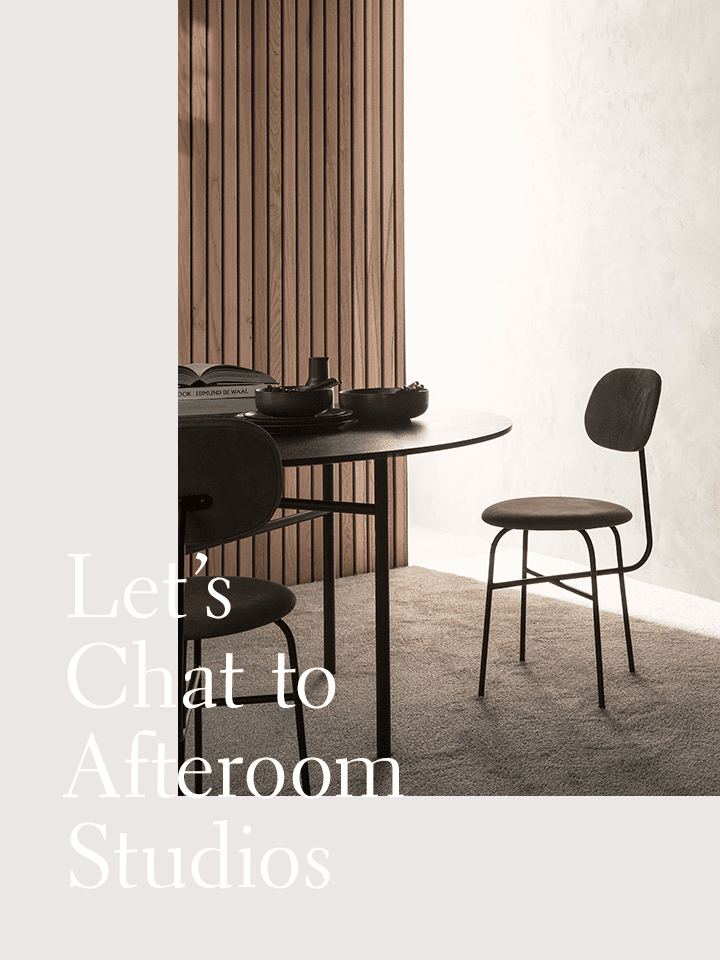
Afteroom Studios is a name we’re certain you’re familiar with, especially if you have a deep love for Scandinavian design. The Stockholm based design studio is headed by Hung-Ming Chen and Chen-Yen Wei, creating pieces “to grow old with”. Their work is unique and timeless a proven game changer in the world of interior and industrial design.
An Afteroom Studio design achieves balance between form and function, and is what we believe sets them apart. This got us thinking, how do they always get it so right? So we went to Hung-Ming and Chen-Yen, to discuss their design process and their stunning Afteroom chairs (of course.)

DS: How would you describe what you do as designers?
Afteroom Studios: We create beautiful products that will add value over time – design to grow old with. The inspiration derives from an intriguing interest of forms, senses, proportions, materials, and cultures. The philosophy pivots around simplicity and honesty.
DS: How do you know when a piece of furniture, or collection, you are working on is complete?
Afteroom Studios: We always review drawings together. If both of us like the direction without hesitations then it usually works well. However, each design must go through several adjustments with our client in order to find a good balance between production and the market demand. When the design is successfully available on the market, the project is complete.
DS: Given that you’re a team of two, how do you balance differing ideas and opinions when working together?
Afteroom Studios: We have simple rules to keep in mind. Chen-Yen is the art director and Hung-Ming works on idea visualisation and CAD drawings. So basically, Chen-Yen decides whether the direction is good to be going on or makes some modifications during the idea-developing phase. Meanwhile, Hung-Ming needs to find good solutions for production. Sometimes the process of finding the common grounds will take some time, but once we overcome it, everything will become smoother.


DS: We adore your Afteroom Chairs, they’re iconic and core to Menu’s range of furniture. Can you tell us about the design process you undertook with this piece and any references or inspiration points you drew from?
Afteroom Studios: We established our studio in 2011 and applied for the Greenhouse Exhibition at the Stockholm Furniture Fair the year after. For this debut exhibition, we needed a statement piece to communicate what we do and who we are. As a big fan of mid-century modernism, we learned a lot from the modern-gurus, such as Jean Prouvé, Alvar Aalto, Arne Jacobsen and Hans J Wegner, the list keeps going on and on. Therefore, we challenged ourselves to create a simple chair with a strong visual impact, something inherited from our modernism heroes.
DS: How selective are you when it comes to collaborating and working with brands and design houses? What do you think makes a collaboration successful?
Afteroom Studios: We think it needs to be composed by both parties. We like to work with brands that have the same vision as ours, but first of all, they should also appreciate what we do. For us, a successful cooperation means that it benefits both parties. We should be able to create what they need, and they can successfully deliver it to many people.









